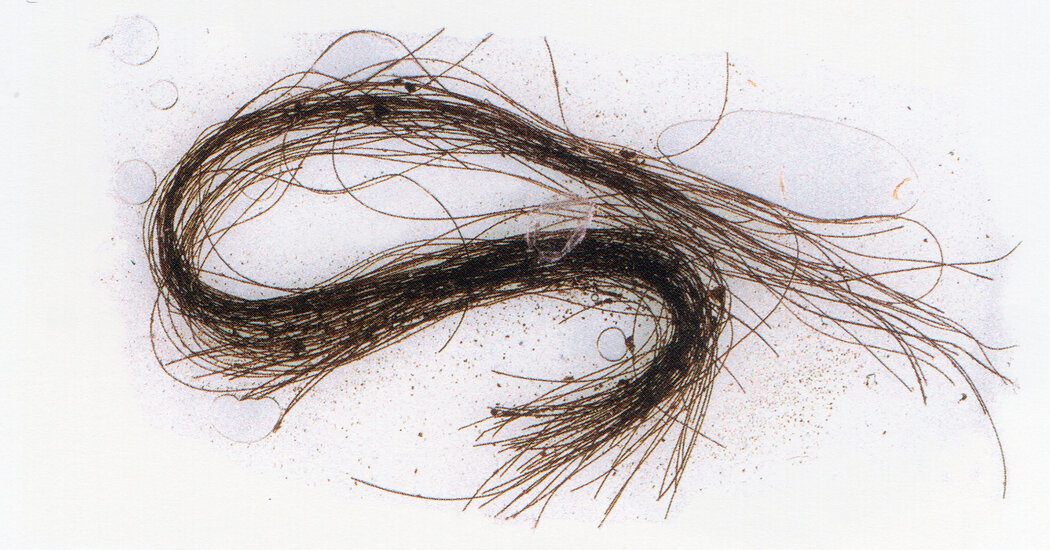Bronze Age humans have been credited with a number of civilizational advancements: the invention of irrigation, the wheel, writing systems and the ability to forge weapons and tools from the durable metal that lends the era its name.
Now, strands of human hair discovered in an ancient burial cave in Spain suggest another novelty: a proclivity for consuming psychoactive drugs.
The hair, found inside wooden containers hidden deep within a sealed grotto on Minorca, an island off the coast of eastern Spain, tested positive for a number of mind-altering compounds, suggesting that the people who lived there 3,000 years ago incorporated hallucinogenic experiences into the rituals of their lives.
The findings, published Thursday in Scientific Reports of the journal Nature, provide the first direct evidence that ancient Europeans consumed psychoactive drugs much like their pre-Columbian brethren in Mesoamerica, the researchers said.
Elisa Guerra-Doce, the lead author of the study, said researchers were stunned by the results, especially because the cave interiors yielded no detectable signs of the drugs’ presence. A chemical analysis of the hair revealed evidence of three alkaloid substances known to produce altered states of consciousness: ephedrine, atropine and scopolamine.
Uncovering the Past, One Discovery at a Time
The compounds themselves are produced by flora native to Minorca. Atropine and scopolamine, powerful hallucinogens, can be found in plants in the nightshade family, among them mandrake, henbane and thorn apple. Ephedrine, a stimulant, can be extracted from joint pine.
“These findings are so singular,” said Ms. Guerra-Doce, an expert in the anthropology of intoxication at the University of Valladolid in Spain. “Sometimes when people think about drugs, they think it’s a modern practice. These results tell a different story.”
Ms. Guerra-Doce said the way the compounds were distributed through each hair strand suggests the drugs were consumed over the period of a year, and well before death.
The cave, Es Càrritx, was discovered by spelunkers in 1995 and held the remains of more than 200 people who had been laid to rest over the course of six centuries, with the latest burial in roughly 800 B.C.E. Many were related across multiple generations. Curiously, the cave did not contain the bodies of pregnant women or babies.
For anthropologists, the cave’s most significant treasure were the tubular boxes, mostly wooden but some made of antler, that held tufts of hair dyed red. The boxes and their contents survived in large part because the cave’s opening, more than 80 feet beneath the upper ledge of a 300-foot-tall gorge, had been sealed off by rubble that had collapsed long ago.
Although there is no way to know why these ancient people were consuming such powerful drugs, Ms. Guerra-Doce noted that the boxes featured patterns that present-day humans might interpret as psychedelic inspired — a series of concentric circles suggesting the hypnotic bull’s-eye drawings of yore.
Ancient humans are thought to have used drug plants for both medicinal purposes and religious ceremonies, but until now, much of the scholarship has been based on indirect evidence such as pottery vessels, smoking pipes or plant residue from opium poppies or cannabis found at archaeological sites across Eurasia.
Giorgio Samorini, an Italian ethnobotanist who specializes in the archaeology of psychoactive plants and who was not involved in the study, said he was exhilarated by the findings. He said they added to a growing body of evidence suggesting that hallucinogens were an integral part of ancient societies worldwide.
He said the context of the findings suggested the drugs were consumed as part of a religious ritual. “This was not a profane purpose of ‘searching for a high’ but more generally the search for existential meaning that has been largely lost to time,” he said in an email.
Because the strands lacked hair bulbs, scientists were unable to do a DNA analysis that would allow them to determine the sex of those who had consumed the compounds.
The three compounds have a long history of human use. Ephedrine is a stimulant that provides bursts of energy and mental clarity, and it can stave off sleepiness. Atropine and scopolamine are powerful deliriants that can produce hallucinations and out-of-body experiences. In higher concentrations, atropine can lead to respiratory failure, paralysis and death.
Although impossible to know for sure, Ms. Guerra-Doce said the presence of these drugs suggested that the people who used them were guided by someone, perhaps a shaman, who understood their powers. “There is so much more we need to learn,” she said.


